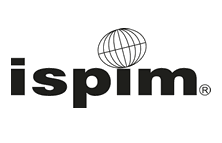SUSTAINABLE INNOVATION 2013
Collaboration, Co-creation & New Business Models
Part of the ‘Towards Sustainable Product Design’ series of conferences
18th International Conference
4th-5th November 2013
University for the Creative Arts
Epsom
Surrey
UK
Sustainable Innovation 2012: Key Lessons
Martin Charter, Director, The Centre for Sustainable Design @ UCA
- Great transformation: major global climate, economic, food, material, water and energy challenges are leading thinkers to call for substantial change in our existing model of capitalism and to move towards ‘closed loop’, low carbon business models.
- Resources: there are growing pressures for significantly improved resource efficiency in business driven by issues like materials scarcity, this is forcing many companies to explore where, for example, critical metals can be substituted and where they cant – this is inspiring innovation.
- Networks: there are numerous engineering networks aimed at driving materials and energy efficiency but similar networks need to be created for industrial designers and architects if further innovation, and more radical innovation, is to happen.
- Missions: there are major implications for companies that shift business missions (e.g. what business are we in?) in more resilient, sustainable directions e.g. moving towards a preventative healthcare model will mean investing in the provision of products/services/technologies/new business models that help promote healthier and more sustainable lifestyles which might mean investing in fitness and nutrition businesses.
- Space: to enable radical sustainable innovation a) space needs to be created in companies for more radical solutions outside normal operational product development/innovation processes; and b) new approaches outside of existing business structures need to be established e.g. green technology ‘test beds’ on Bornholm (‘Bright Green’ island) in Denmark and ‘Living Labs’ in Germany.
- Tradition: corporate cultures and organisational processes need to be established that stimulate, promote and reward sustainable innovation. However, radical innovation is likely to come non-traditionally from outside existing processes, companies and sectors.
- New business models: a number of companies are being driven by environmental and social factors to re-think and re-design existing business models and are starting to experiment with open innovation approaches including, in some instances, sharing intellectual property (IP).
- Web 2.0: new business models based on the innovative use of information and communications technologies (ICT) and particularly social networking technologies are emerging based on collaborative models e.g. Common Threads (Ebay/Patagonia).
- Data: improved mining, evaluation and analysis of product-related sustainability data from value chains and social networking conversations will be an increasing source of new opportunities.
- Blurring: there is a blurring of the edge of consumer/user and producer-driven innovation created by new open innovation approaches e.g. hackathons, jams, etc that operate outside conventional business structures.
© Martin Charter 2012 mcharter@ucreative.ac.uk
Contact
For more information on Sustainable Innovation 13 please contact:
Professor Martin CharterDirector
The Centre for Sustainable Design ®
University for the Creative Arts
Farnham Campus
Farnham
Surrey
GU9 7DS
UK
Tel: + 44 (0) 1252 892772
Fax: + 44 (0) 1252 892747
Email: mcharter@ucreative.ac.uk










